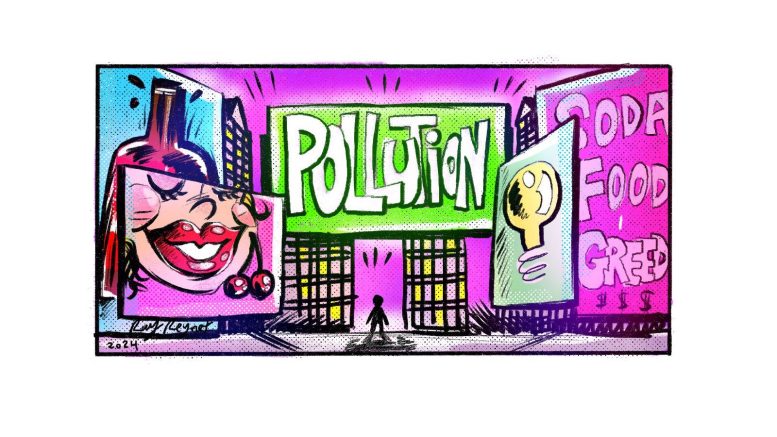Kailey Krantz | Staff Writer
In Miami, light pollution can be a silent yet deadly problem in our glowing cityscapes. The health and safety issues that are in the shadows of these artificial lights can make the truth less glamorous.
On May 23, Miami commissioners voted to keep electronic billboards up but regulate their hours of operation after people were worried about a 10-story electronic billboard being constructed along Interstate 395 in front of the Adrienne Arsht Center.
This is a great step towards combating light pollution, but this is putting a Band-Aid on a bigger issue.
The problem with light pollution is that it causes dire medical issues for students and their overuse makes campus pathways less safer than expected.
The excruciating brightness can mess up a person’s circadian rhythm by not producing enough melatonin, an important hormone that helps people sleep. Without that hormone, there would be no possible way to sleep well or at all.
Imagine trying to sleep beside a bright and giant lightbulb without being able to turn it off all night long – no one would be sleeping right.
A bad night’s sleep is just the start of a student’s problem. If this becomes a recurring issue, it could increase the risks of depression, diabetes and heart disease.
Not getting enough sleep and being sick is a double whammy for any student’s health and the blinding lights on campus are not helping.
Dr. James Webb lamented in an interview with PantherNOW about some of the unnecessary light fixtures on the MMC Campus with one example being the electronic billboard on the Graham Center atrium.
Why would a giant billboard be necessary to be lit every night, even after the school is closed? It ends up becoming a beacon of LED lights that can mess up anyone’s eyes.
The streetlights lining the campus pathways may be small, but they are one of the most insidious culprits of light pollution we have.
They are so powerful that they end up doing the opposite by keeping the other side of the light fixture in the dark, instead of protecting the students like they’re supposed to.
It’s better to lower the brightness, so students wouldn’t be blinded by them on top of reducing light pollution.
The best solution to lower light pollution is to turn off the lights that don’t need to be left on overnight, purchase curtains that can block out the artificial lights outside and buy softer lights that can be adjusted to the appropriate brightness.
Artificial lights are beautiful to look at but it can blind us to the truth we shouldn’t be ignoring. We must do our best to reduce our light footprint before it’s too late.
DISCLAIMER:
The opinions presented on this page do not represent the views of the PantherNOW Editorial Board. These views are separate from editorials and reflect individual perspectives of contributing writers and/or members of the University community.






Be the first to comment on "Light pollution is only getting worse"